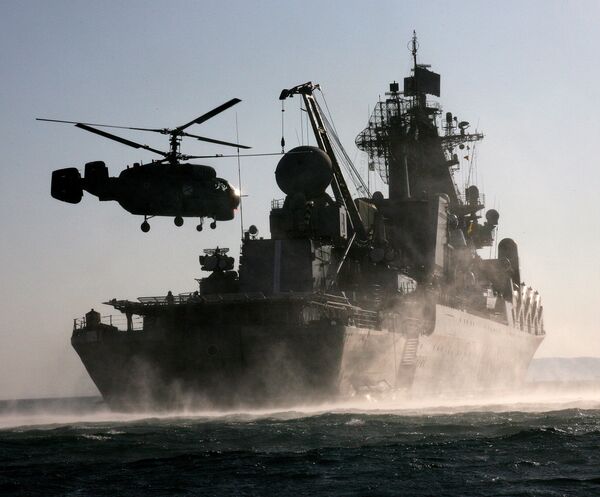Russia plans to spend 13 trillion rubles ($417 billion) on its rearmament program through 2020, Gen. Oleg Frolov, acting chief of armaments at the Defense Ministry, reported to the State Duma on June 3.
He said this should be enough for rearming the strategic nuclear forces, the Air Force and the Air Defense Force, but the Army and the Navy will have to make do with available weapons and can expect only minor supplies of new armaments.
To fully finance all requirements of the armed forces, Russia must allocate 28-36 trillion rubles ($898 billion - $1.15 trillion) over the next ten years.
What can the Russian armed forces expect to receive under the program?
The Air Force is to receive 350 new aircraft and 400 new or modernized helicopters in the next five years. In ten years' time, the entire fleet will include 1,500 fixed and rotary-wing aircraft, including at least 800 new and modernized combat planes. The highlight of the program is the fifth-generation T-50 jet fighter, which is expected to be mass produced in 2015.
Military transport aviation will get funding to maintain existing planes (Il-76, An-22 and An-124 Ruslan) and buy a number of new ones, in particular Il-476, Il-112B, An-70, An-124 Ruslans, production of which is to resume soon, and possibly other types of aircraft.
The Air Defense Force will receive more S-400 missile systems in addition to the modernized S-300s, the Pantsyr short-range missile and gun systems, the S-500 systems currently under development, the Vityaz medium-range missile systems and other weapons.
The strategic nuclear forces, for which priority funding was advocated by generals and top politicians alike, will be supplied with Topol-M missiles and the RS-24 Yars MIRVed thermonuclear intercontinental ballistic missiles, as well as a new silo-based heavy missile.
The program for the Air Force includes modernization of the Tu-95 Bear and Tu-160 Blackjack heavy bombers and development of a next-generation strategic bomber often referred to as PAK DA, which stands for "future air complex for strategic aviation."
The strategic naval nuclear forces are to receive eight Project 955 strategic boats armed with Bulava missiles, which are expected to complete flight tests within a year.
As for the Army and the Navy, they will have to resign themselves to receiving small amounts of new weapon systems. This could prove dangerous.
This level of rearmaments can be justified for the Army, as nearly all of Russia's neighbors have abandoned army modernization plans and many of them have even decided to make drastic cuts in their forces and are reviewing their weapons programs.
In particular, the United States has dropped its ambitious Future Combat System program, which called for the development of new combat vehicles, from self-propelled guns to infantry combat vehicles. Germany and Britain have scaled back their plans to develop new tanks, and Russia has recently discontinued its T-95 tank project.
Russia's current plans for the Army are apparently limited to the modernization and repair of existing systems.
The situation in the Navy is even worse. Unless it receives proper funding for its rearmament program, it will be able to buy no more than 12-15 corvette/frigate warships, 6-8 multirole nuclear and diesel submarines and a number of ships and boats of other classes over the next ten years. The government might also fund the acquisition of four Mistral-class amphibious assault ships.
This is insufficient to replenish the Navy's losses due to simple wear and tear. Given such meager supplies, by 2020-2025 the Russian Navy will be unable to operate independently in distant theatres, or protect Russia's economic interests against a strong enemy in its territorial waters and key regions of the world, or support the Army in coastal areas. Moreover, it will be unable to ensure the operation of strategic submarines.
This is unacceptable, particularly in light of the growing importance of the Navy and naval theaters of war. This inertial development of the Navy will preclude the possibility of rapid improvement when the government finds the money for it.
If Russia fails to act soon, the Navy could find itself unable to defend the nation's interests, sovereignty and territorial integrity. The only solution is to make military spending a greater percentage of GDP while ensuring that allocations are made wisely, because squandering money is one of Russia's national pastimes.
The opinions expressed in this article are the author's and do not necessarily represent those of RIA Novosti.
MOSCOW (RIA Novosti military commentator Ilya Kramnik)

